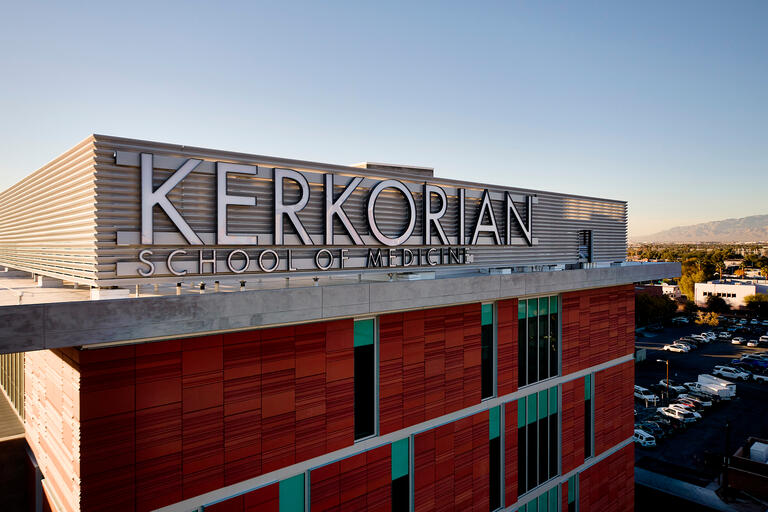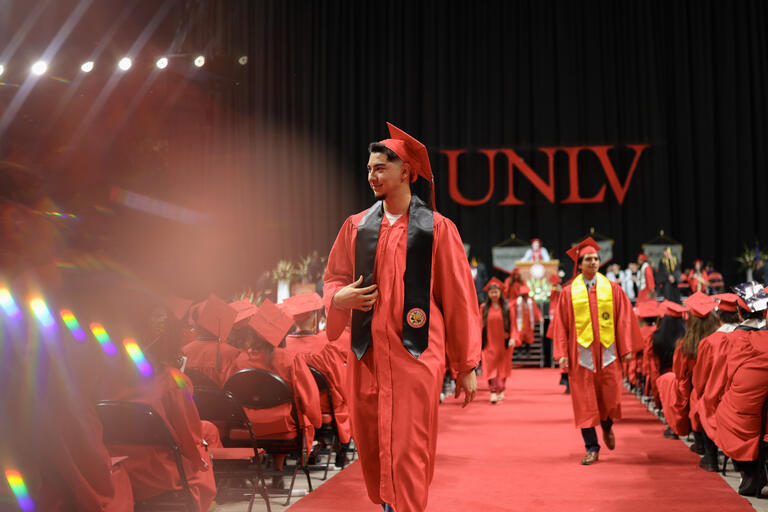Last month, an hours-long queue outside the highly anticipated H Mart in Las Vegas, a popular Korean grocery chain, made one thing clear: Asian cuisine is no longer niche. Las Vegas is home to some of the nation’s best Thai food, is often called the “Ninth Island” due to its large Hawaiian population, and features official Chinatown and Filipino Town districts. Here, Asian food is central to the cultural palate.
At UNLV, students are digging in — literally and academically — by tasting dishes and learning about the history of Asian America.
The Course: Food and Asian America

Mark Padoongpatt, associate professor and director of Asian and Asian American Studies, created the course to explore the role of food in Asian America. To immerse themselves in the subject, students learn how to make regional dishes and take field trips to local restaurants and grocery stores.
Padoongpatt makes an effort to equitably cover groups within the Asian American and Pacific Island (AAPI) community. “As a Thai American scholar who comes from a community that is often invisible or left out of the narratives of Asian American experiences, I make sure in the class that we center some of the more marginal or seemingly smaller groups in the Asian American community,” he says.
Many are familiar with ramen, but what about Som Tam or Noum Kong? Padoongpatt dedicates certain weeks of the course to Laos, Cambodian, and Native Hawaiian cultures.
Why Was the Course Created?
Studying new cuisines is fun for the students, but the learning doesn’t stop there.
After noticing the popularity of Asian cuisine, Padoongpatt created the course to bring attention to the peoples and cultures. By using an accessible topic, Padoongpatt is able to introduce more complex issues, like immigration, race and ethnicity, colonialism, imperialism, and labor to understand the histories of AAPI communities.
“The course tries to get us to go beyond the plate — beyond just cooking and eating — and to think about the hands that make the food that arrives on our tables,” he explains.

Who’s Teaching It?
Padoongpatt’s research focuses on AAPI histories in the 20th century; he has written on the history of food in the Thai American community post WWII.
He is also behind Nevada’s first Mellon Foundation grant, used to develop the Neon Pacific Initiative, which works to increase research, engagement, and community partnerships within AAPI communities.
Padoongpatt was featured in an episode of Padma Lakshmi’s Hulu show, Taste the Nation, and his research is so well known that if you look up “pad Thai” on Wikipedia, you’ll find Padoongpatt cited.
What’s something students might be surprised to learn?
Speaking of pad Thai, students are often surprised to learn that it’s not a traditional, centuries-old Thai dish. (It was created in the 1930s.)
Padoongpatt says students also are surprised to learn the history of monosodium glutamate. A common flavor enhancer used in everything from potato chips to canned soup, MSG is often associated with Chinese food because it has undergone a sociological process called “racialization.” What was once a neutral ingredient became associated with negative effects. “They call it ‘wonton soup headache,’ or ‘Chinese restaurant syndrome’…Chinese people and restaurants have to fight against this idea that MSG is dangerous and a public health threat.”
What excites you the most about teaching this course?
The unconventional activities, both inside and outside the classroom, are Padoongpatt’s favorite part of teaching the course. Visiting restaurants and grocery stores is always fun for both Padoongpatt and his students. “The other thing that excites me about teaching the class is that I run it like a writing room for a television show on food and Asian Americans,” he says.
“When we talk about a dish and we do the readings, we try to connect the readings to the history of the dish that we're learning about,” he says. “The conversations are often about what kind of stories we can tell.”

What is something even lay people should know from this course?
Food is a universal language, and the course is ultimately about human connection. “It’s not just about Asian Americans, but it's about all of us in American society," Padoongpatt says. "The stories we tell about Asian American communities through food are also stories about ourselves and how we connect with other human beings.”
The reading list
For anyone interested in food and culture, Padoongpatt says the best place to start is with TV shows:
- Padma Lakshmi’s Taste the Nation
- Lisa Ling’s Take Out
- The Migrant Kitchen on PBS
He also recommends Crying in H Mart, a memoir by Michelle Zauner, singer and guitarist of the band Japanese Breakfast.
If you’re feeling hungry, Padoongpatt recommends cookbooks authored by AAPI chefs.



